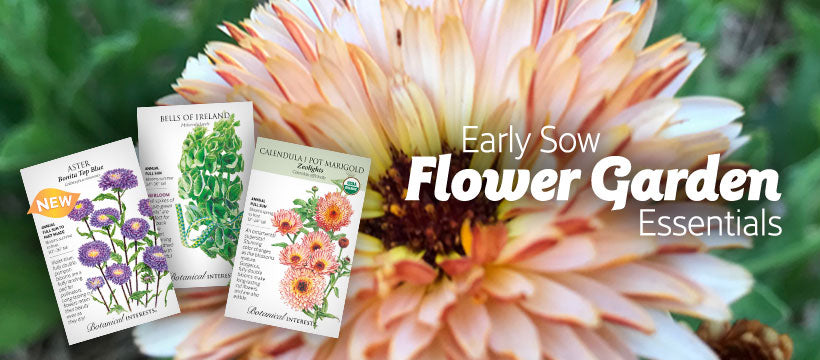As gardeners, we'd all love to have a long, mild growing season. But for lots of us that don't, there are plenty of plants to fit different kinds of growing seasons, whether it is short, hot, or dry. After you choose the appropriate variety for your conditions (selection categories below), keep reading for how to make your garden thrive.

Short-Season Gardens
Start seeds indoors. Our seed packets give specific indoor starting instructions.
Get a head start by using row cover or clear plastic to create warm, low tunnels in the garden.
Mulch in the heat of summer, to insulate the soil, keeping it warmer for longer growing in fall.
Choose frost tolerant varieties to make your harvest last longer.
Find sheltered areas that create warmer "micro-climates". For instance, a south-facing wall can retain heat, warming earlier in spring and staying warmer in fall.
Chose storage crops like winter radishes, garlic, carrots, or winter squash that will keep garden-fresh meals going well into winter.
Hot-Summer Gardens
Create a garden plan around mild weather, as it can be a very productive time.
Mulch while temperatures are cool to keep plant roots cooler for longer.
Water in the morning or evening to maximize water uptake.
Harvest in the morning. For hot summer areas, this will keep crops at their peak longer, meaning longer vase life for flowers and fresher vegetables.
Trellis tall plants like tomatoes or vines in order to shade plants that like cooler temperatures like lettuce, radish, pansies, violas, or peas.
Fertilize with kelp, fish emulsion, or other fertilizers higher in potassium and micronutrients to help plants manage stress like heat or drought.

Dry Gardening Areas
Add organic material like cover crops, leaves, or compost to your garden to increase the soil's ability to retain water. A soil test is a good place to start if you are unsure if you already have enough organic material, as too much can be harmful.
Mulch plants to help reduce water evaporation from the soil, keeping moisture more consistent and reducing water usage.
Group any high-water plants (like most vegetables) together and close to a water source. Watering a central area saves both time and water.
Water strategically. Water in the evening, watering deeply, and less frequently, to grow deeper roots that can "mine" for water, making plants more drought resilient.
Fertilize with kelp, fish emulsion, or other fertilizers higher in potassium and micronutrients to help plants manage stress like heat or drought.


